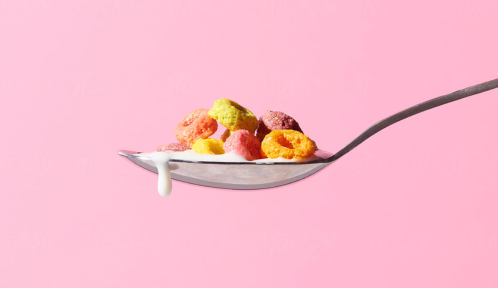Our editors independently select these products. Making a purchase through our links may earn Well+Good a commission
Last month, PepsiCo announced that it was selling Tropicana, Naked, and other juice brands because it would “free us to concentrate on our current portfolio of diverse offerings, including growing our portfolio of healthier snacks, zero-calorie beverages, and products.”
Experts in This Article
Charlie Wettlaufer is the president and CMO of Goodnature, a cold-pressed juice equipment company.
an intuitive eating coach, anti-diet dietitian
co-founder of Earth&Star, a functional mushroom beverage line
director of food and drink at trend casting firm WGSN
founder and CEO of Apothekary, an herbal blend company
co-founder of Earth&Star, a functional mushroom beverage brand
This came just one month after Coca-Cola announced it was passing on the decision to buy Suja Juice, which it has had a 30-percent stake in since 2015. Like PepsiCo, they too seemed to be moving away from the juice business; last year they decided to completely shut down production for Odwalla Juice.
The shift seemed symbolic—especially given PepsiCo’s reasoning to focus on “healthier” drinks. There was a time when juice was the embodiment of a healthy drink, a Crayola-colored beacon of wellness. But now, many of the MVPs of the once-thriving juice world have moved on. BluePrint founders Zoe Sakoutis and Erica Huss sold their business in 2013, and in 2020 launched a new brand, Earth & Star, which is centered on functional mushrooms. The once mega-popular New York City juice bar chain Organic Avenue shut down all of its locations in 2015. Last year, Liquiteria, another NYC fave, did the same. On the other side of the country in Los Angeles, Juice Served Here shut down its locations in 2017.
With so many major conglomerates and regional favorites giving up on the beverage, it certainly makes you wonder: Has the wellness world’s love affair with juice expired?
How the wellness world became so infatuated by juice
Kara Nielsen, the director of food and drink at trend forecasting firm WGSN, has been reporting on food trends for more than 20 years and says juice morphed from being something your grandparents sipped with their cereal to being the drink of choice for health-conscious people in the early and mid-2000s. This was the same time that SoulCycle was wheeling their yellow bikes into studios in New York City and Los Angeles, and also around the same time Well+Good launched, in 2010.
“This was when there was a growing concern about toxins in food and the rise of organic produce really started taking off,” Nielsen says. “There was also this desire to squeeze in five servings of fruit and vegetables a day. Millennials, in particular, were looking to fulfill their daily green requirements, and juice became an easy, convenient way for them to do this.” Nielsen says that it wasn’t just any juice consumers were after: they wanted organic, cold-pressed juice. Cold-pressers use a slow pulverizer and a hydraulic press to extract the maximum amount of juice from whole fresh fruits and vegetables. Additional heat and oxygen are not used in the process, which means that no nutrients are lost due to the heat of traditional pasteurization. The average price for a bottle was between $8 and $13.
As with any trend, the fact that celebrities were talking about how much they loved juice propelled the beverage’s popularity. Fashion publications like InStyle ran entire photo features of stars like Naomi Watts, Michelle Williams, and Emma Stone clutching their green juices, often while wearing abs-baring crop tops or Sweaty Betty leggings. “A drink is like an accessory,” says Shizu Okusa, who founded cold-pressed juice company Jrink in 2013. (She has since sold the company and now, like the BluePrint founders, moved into the functional mushroom space with her company Apothekary.) “Unlike food, which is consumed comparatively quickly, you can stash a bottled juice in your purse and carry it around with you. Carrying around a cold-pressed juice sends a statement about yourself.”
BluePrint co-founder Zoe Sakoutis agrees. “Carrying around a cold-pressed juice was a status symbol,” she says. “If you were carrying around a bottle of BluePrint, it meant you had money, willpower, and the self-respect to do something good for yourself.” Or at least, the sheer act of toting a green juice was quietly meant to evoke the appearance of these qualities.
It would be impossible to talk about the rise of juice without talking about juicing. (Once a drink moves from a noun to a verb, it really says something, wouldn’t you say?) Sakoutis says doing a “detox” or “cleanse” was one reason why many turned to juice—including BluePrint, which sold juice cleanse packages. “We launched in 2007, and at the time, there was only one person in New York City [selling] a juice cleanse [program], Jill Pettijohn, who was a nutritionist for Donna Karan. That was her [only] claim to fame,” Sakoutis says. Her point? That BluePrint was the first brand to really create a following. “We took it from being this weird fringy thing to something more accessible,” she says. It worked. In 2013, Sakoutis and co-founder Erica Husssold the brand for $25 million.
Seeing BluePrint’s success, other brands started sprouting up, hoping to capitalize on the fast-growing trend. Charlie Wettlaufer, the president and CMO for cold-pressed juice equipment company Goodnature, had a front-row seat to the juice boom. His father and the company’s founder, Dale Wettlaufer, invented a six-foot-tall juice press in the ’70s. “When juicing took off, our little company became the only one in the world making a commercial-size juice press that could make hundreds of bottles a day,” Wettlaufer says. “[In the 2000s], we went from being this little family-owned business barely surviving to shipping thousands of machines to over 70 countries.”
But he says many of the big juice brands they worked with were unable to maintain their success.
Why big juice brands struggled
Wettlaufer says a major shift in the juice world started happening around 2015: Companies started going bankrupt. “A lot of the companies were just burning investor cash and they weren’t really making any money,” he says. The major reason for this, Wettlaufer explains, is that cold-pressed juice is expensive to make. “Companies like PepsiCo and Coca-Cola are used to selling products that are primarily water, whether it’s bottled water, tea, or soda, which is 95 percent water with a little sugar syrup and food coloring added in. Real, cold-pressed juice made with fresh fruits and vegetables is hard to scale. In fact, I would say it’s impossible.”
The BluePrint founders agree. They point out that the tricky part about cold-pressed juice is that it has a short shelf-life; just a few days after being bottled, it will start to turn brown, more resembling swamp water than the jewel tone it once was. This, Sakoutis says, led to many juice brands using cheaper ingredients and using other juicing methods that weren’t cold-pressed to extend the shelf-life, which ultimately makes the juices less nutrient-dense.
She agrees with Wettlaufer that there is no way to scale cold-pressed juices while maintaining their integrity. “There’s this little juice shop in Williamsburg I go to and the owner [recently] asked to meet with me—she was considering scaling her business and wanted to pick my brain,” Sakoutis says. “I was like, ‘Please don’t do it! I go 20 minutes out of my way to come here because you have real juice. Stay the course!'”
Okusa says that at the same time that many brands were attempting to scale their juices—lessening the nutrient density in the process—people started becoming more conscious of their sugar consumption. “Because of this, people started moving towards drinks that were both lower in sugar and higher in protein,” she says. Nielsen says this was 100 percent the case. “These sorts of trends become really popular and then people get sick of them. What happened with juice is that people started replacing it with protein drinks, which were suddenly everywhere.” Not so coincidentally, Nielsen says this was the same time the ketogenic diet gained momentum. The keto diet was the number one Googled health term in 2018 and was second in 2019. The eating plan has strict carb and sugar limitations and fruit juice is definitely not keto-approved.
Is green juice healthy? Watch the video below to find out:
Another shift started to happen, too: More nutritionists, dietitians, and others in the wellness space were speaking out about the very serious health consequences of detoxing or cleansing. “There’s a growing awareness that cleanses and detoxes—including juicing—can be really dangerous and lead to disordered eating,” says Christy Harrison, RD, a registered dietitian and author of Anti-Diet. She emphasizes that no food is “good” or “bad.” In fact, she’s all for juice. It’s when one type of food or drink becomes an obsession, to the point where it’s the only thing you consume for days on end, that she says it becomes problematic.
All of this combined—the difficulty in scaling cold-pressed juice, the shift to low-sugar and high-protein, the realization juice cleanses aren’t, in fact, healthy—led to a downward shift in the popularity of juice. That is, until COVID-19 hit.
How COVID-19 is affecting the juice business
Guess what? Juice is back. This time, however, it is for a completely divergent purpose; one that touts its own distinct marketing tactics.
While the foods you eat—and the nutrients you drink—won’t prevent you from contracting COVID-19, it is undeniable to say that the pandemic has led many to seek out immune-supporting foods, beverages, and supplements. According to data from Information Resources Inc, the refrigerated juice and drinks category rose 8.9 percent from 2019 to 2020, totaling $7.4 billion in sales. “Fruit beverages are one of the few categories that have actually experienced improved performance due to the pandemic,” Gary Hemphill, the managing director of research for Beverage Marketing Corporation told Beverage Industry in January 2021.
“This year is the best year we’ve had since peak juice,” Wettlaufer says of Goodnature’s business. “Our web traffic is double what it was last year.” But unlike what happened in the early 2000s, he is not anticipating big juice brands to start crowding Whole Foods refrigerators. This time, it’s family-owned juice shops that are selling juice, not people looking to create brands to one day sell to a conglomerate. “There are thousands of little juice companies popping up all across the country,” Wettlaufer explains.
This shift, he says, is a good one because local juice shops make a smaller number of juices fresh so they’re able to better maintain the nutrient quality. “It’s also more personal,” Wettlaufer says. “You can ask the people at the juice shop about specific ingredients, like turmeric or moringa, or ask for their advice on what to order.” He also says that this time, people aren’t lining up to buy a pack of colorful bottles for a cleanse; now, the focus is on sipping something that supports overall health—another positive shift.
Wettlaufer adds that consumers have more knowledge now about how to read nutritional panels; they’re more aware of added sugar and other additives. This is another reason why he says smaller juice shops will thrive over big brands selling juices that aren’t as nutrient-rich so they can sell them for cheaper and extend their shelf life. “Regardless of the headlines about big companies selling off their juice brands, juice as an industry is thriving,” Wettlaufer says. “The [family-owned] shops selling high-quality juices are surviving and big brands selling nutrient-poor juice are not.”
The future is clear: Consumers will only support juice that is truly worth the squeeze. Despite major conglomerates selling off their juice brands, juice definitely isn’t over. Juicing may be over. (Good riddance!) But juice? It’s still on the table—and in the hands of consumers across the country.
Oh hi! You look like someone who loves free workouts, discounts for cutting-edge wellness brands, and exclusive Well+Good content. Sign up for Well+, our online community of wellness insiders, and unlock your rewards instantly.
Sign Up for Our Daily Newsletter
Get all the latest in wellness, trends, food, fitness, beauty, and more delivered right to your inbox.
Got it, you've been added to our email list.










